There is one thing people who love shotguns and people who hate shotguns can agree on… they are great for hunting.
Shotguns are versatile weapons capable of hunting everything from small game to the North American Black Bear. A multitude of barrel lengths, shot types, shell lengths, chokes, and more ensure they can be tuned to do nearly anything.
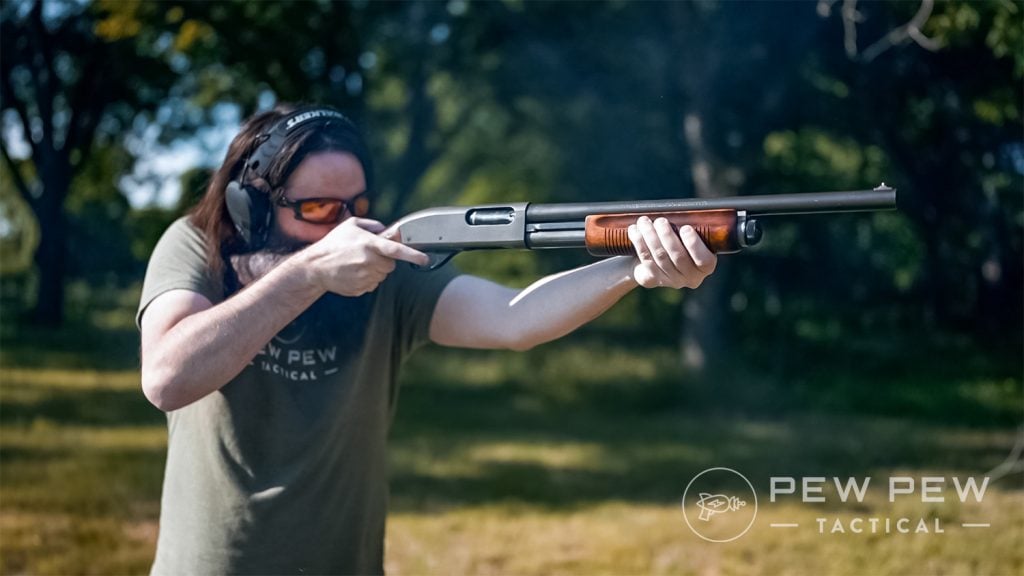
Today, we are discussing anything and everything a shotgun can do for the enterprising hunter. We are breaking the shotgun down in painful detail and talking about how to get the right gun, choke, ammo, and more for your needs!
Table of Contents
Loading…
Benefits of a Hunting Shotgun
We’ve mentioned the versatility to hunt nearly anything, but there is more to a shotgun than that. One of the big benefits of a shotgun? The majority of ammo offers you a bit of spread — not so much that you don’t have to aim, but enough to cover small marksmanship issues like flinching or a hastily taken shot.
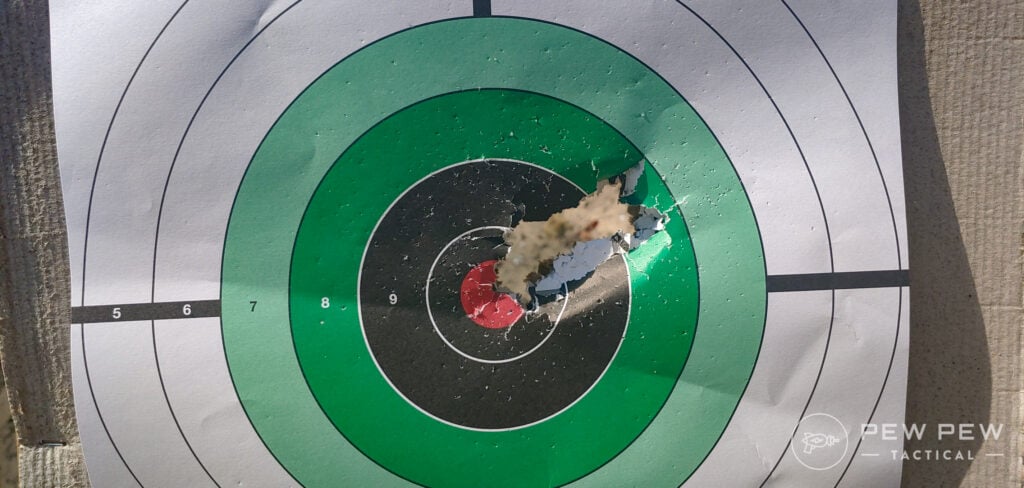
Additionally, that spread makes it easier to hit moving targets, especially small ones. There’s a reason shotguns are the only weapons used by bird hunters. That same benefit can be applied to other game, including squirrels, rabbits, and even predators like coyotes.
That spread can also be beneficial when shooting at night. Most hunting is legally only allowed to be done during the day. However, some states allow hunting certain animals at night, especially when it comes to nuisance animals. For example, hunting hogs on private land is typically allowed at night.
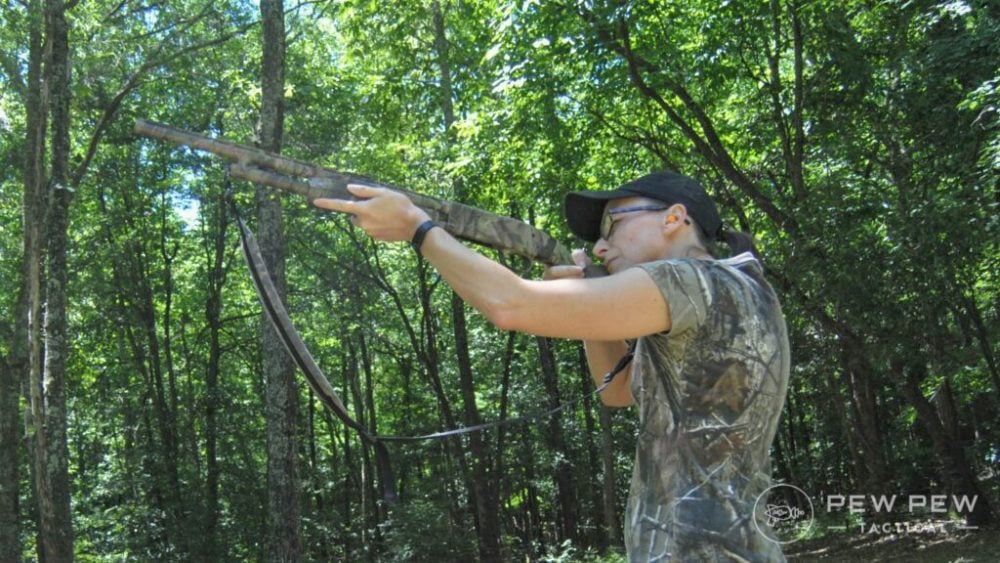
Beyond night hunting as a deer hunter in Florida, I typically hunt in a swamp in the early morning and late evening. The sun might be up, but the canopy is thick, and it’s often still fairly dim after the sun rises and before it sets, making the shotgun a great option.
Hunting Shotgun Types
There are various action and design types. With shotguns, you can take one action type and use it for any type of hunting.
Outside of swapping the chokes, there is often no problem using a duck gun to hunt deer, for example. Certain action types tend to be advantageous or preferred for certain types of hunting.
Pump Action
Pump action shotguns are repeating firearms often fed from a tubular magazine mounted under the barrel. The shooter has to manually move a pump rearward and then forward to load a round, as well as eject and extract an empty shell.
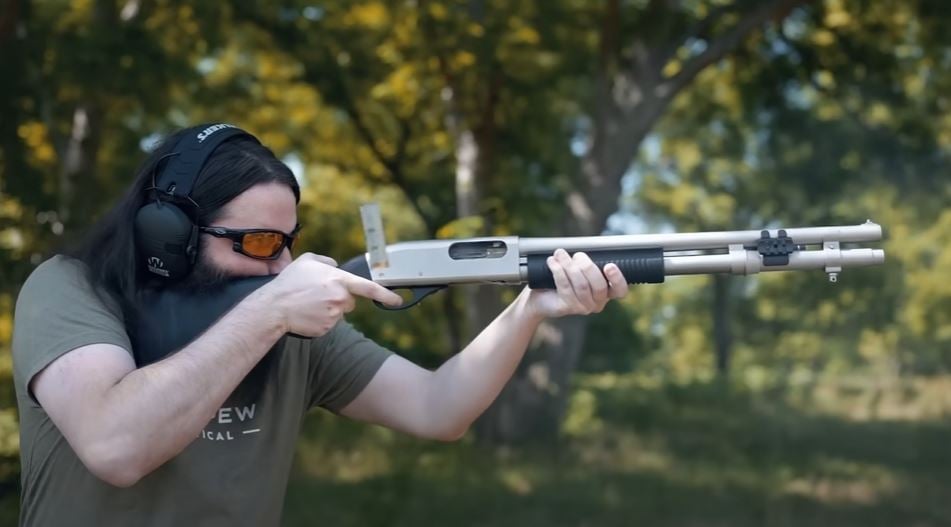
Pump action repeating shotguns are the jack-of-all-trades option for hunters. A basic field model shotgun can be pretty good for hunting deer, hogs, squirrels, bears, etc.
Certain pump action shotguns are designed for specific tasks, like the Ithaca Deer Slayer, designed more for slugs and deer or hog hunting, so it might not work great for bird hunting.
Semi-Auto
Semi-auto shotguns are self-loading firearms. While the user has to manually charge a round into the chamber for the first shotgun, the gun will auto-load after that. This allows the shooter to fire one round per trigger pull.
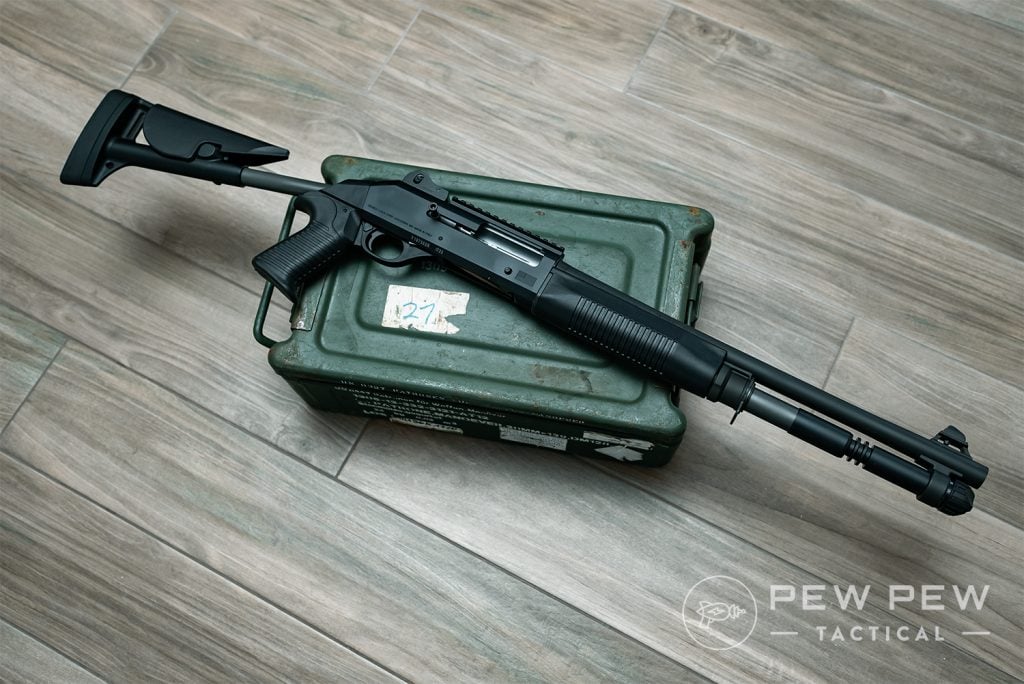
Semi-auto shotguns can be used for all types of hunting. They can be sensitive to lighter loads, especially those aimed at small games like squirrels or flying birds. Semi-auto shotguns are often preferred by bird hunters who want fast follow-up shots and some recoil reduction to deal with harsh and heavy bird hunting loads.
Single Barrel
Single-barrel shotguns are just that. They fire one round before the user manually adds the next round by opening the gun and ejecting and extracting the cartridge. They tend to be very simple, as well as very affordable.
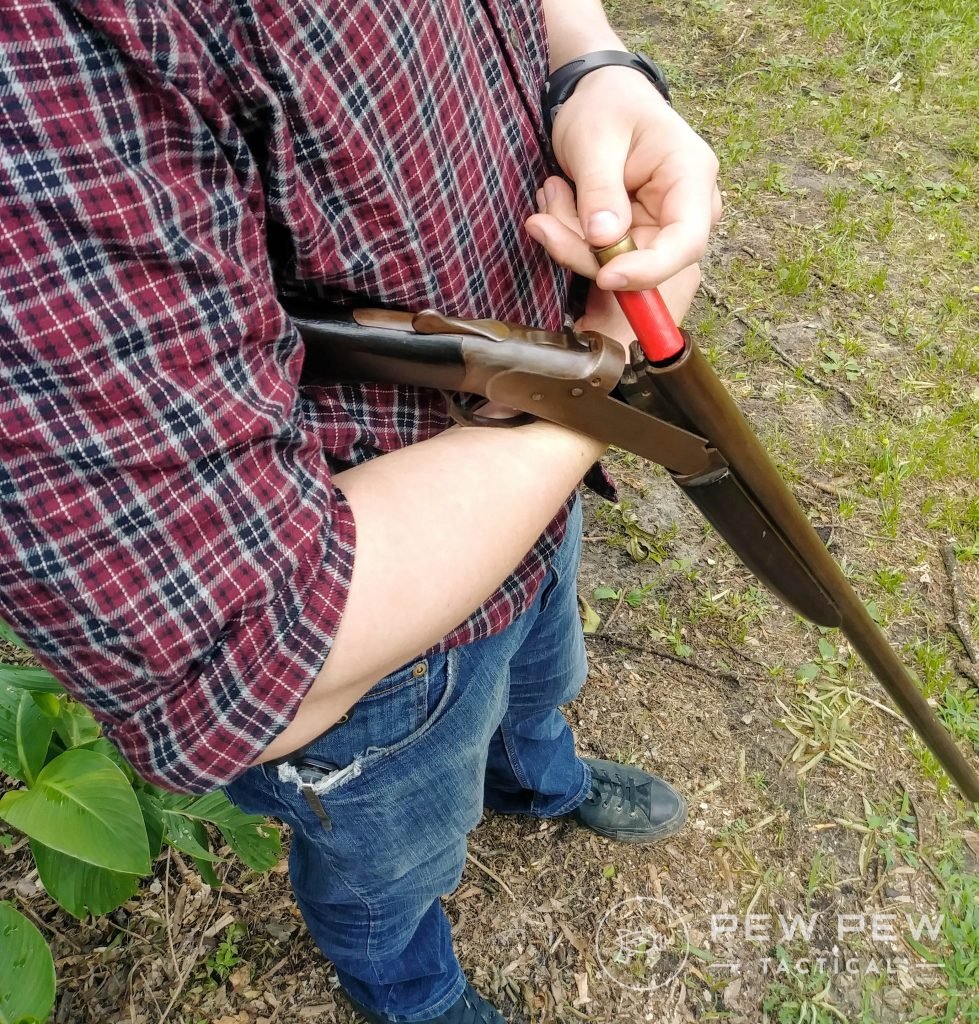
Single-barrel shotguns can be used for a variety of tasks but are hampered by their lack of any type of repeating action. While they are lightweight, they tend to have more intense recoil.
Over/Under
Over/Under (O/U) refers to a type of double-barrel shotgun where the barrels are stacked vertically. This offers a single-sight plane. Double barrel shotguns tend to be a little front-heavy and offer the shooter a balanced swing.
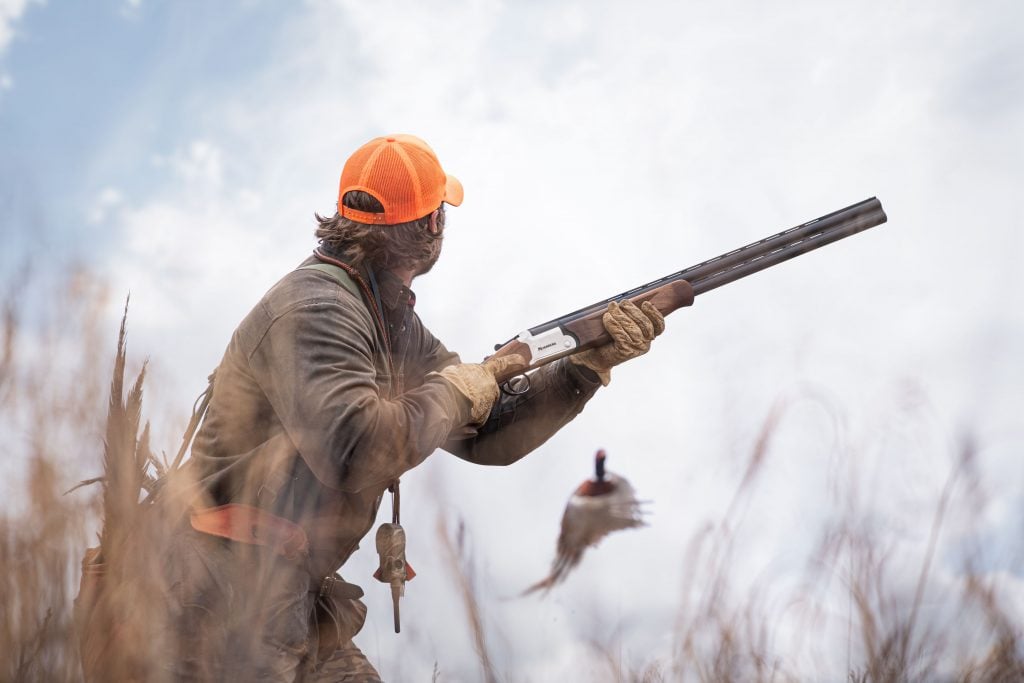
This makes them popular for bird hunting, especially upland bird hunting. Bird hunting regulations often restrict the amount of ammo a gun can carry, so a double barrel isn’t seen as much of a handicap. Most allow for very quick follow-up shots.
Each barrel can also utilize a different load or choke. One barrel can be designed for long-range shots and the other for close range.
Side-By-Side
Side-by-Side (SxS) is a double-barrel shotgun that has barrels arranged vertically. They’ve largely fallen out of favor in the hunting community for O/U guns. However, they make decent bird guns but have a split sighting plane.
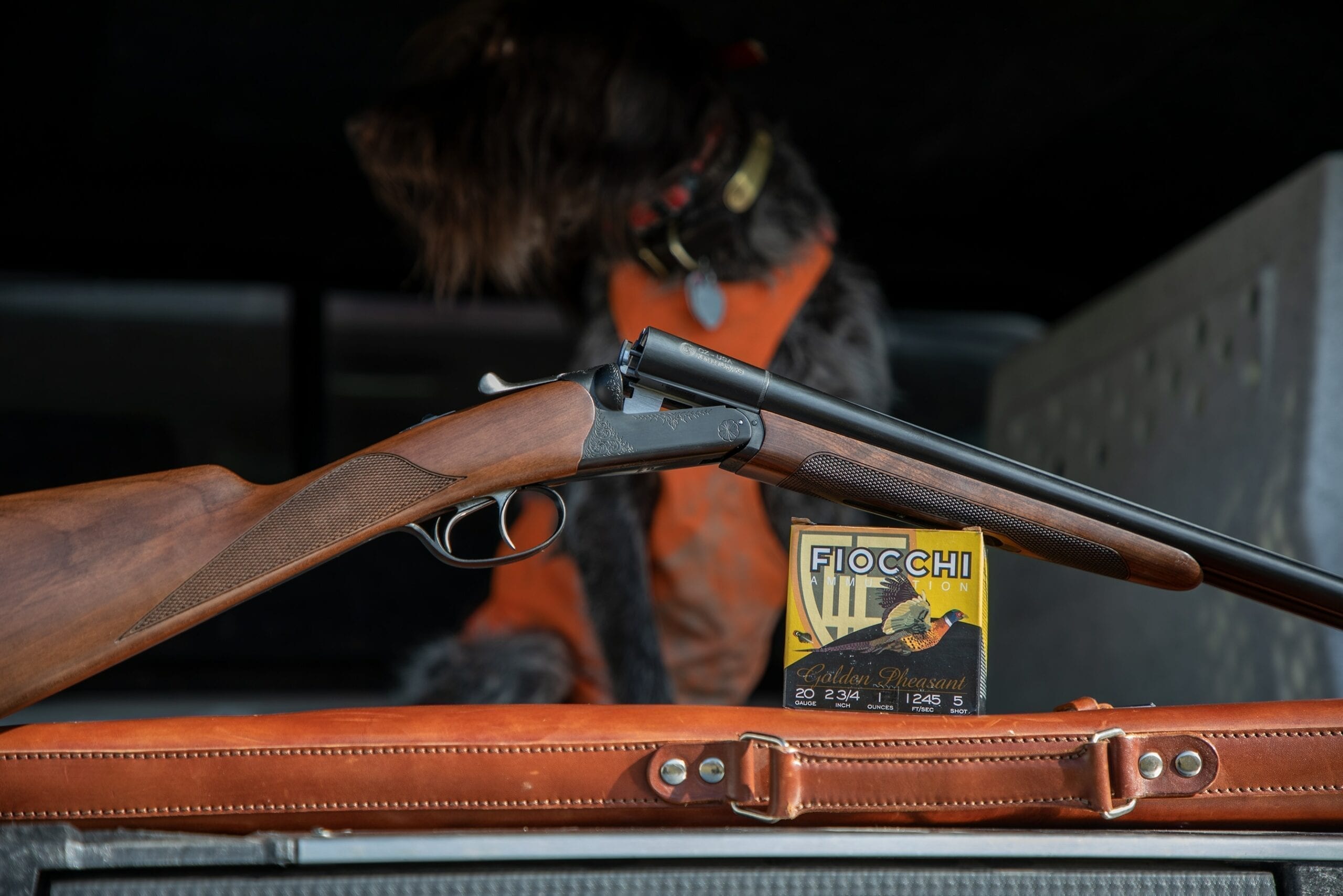
Like an O/U gun, you can customize the barrels and chokes for different loads. Side-By-Sides are not popular, but they can also be used for medium game with a slug in one barrel and a buckshot in the other.
Slug Guns
Slug guns are typically repeating shotguns in the semi-auto or pump variety designed with rifle barrels for use with slugs. Slugs are solid projectiles and act more like rifles. Most slug guns will be either optics-ready or feature rifle-type sights.
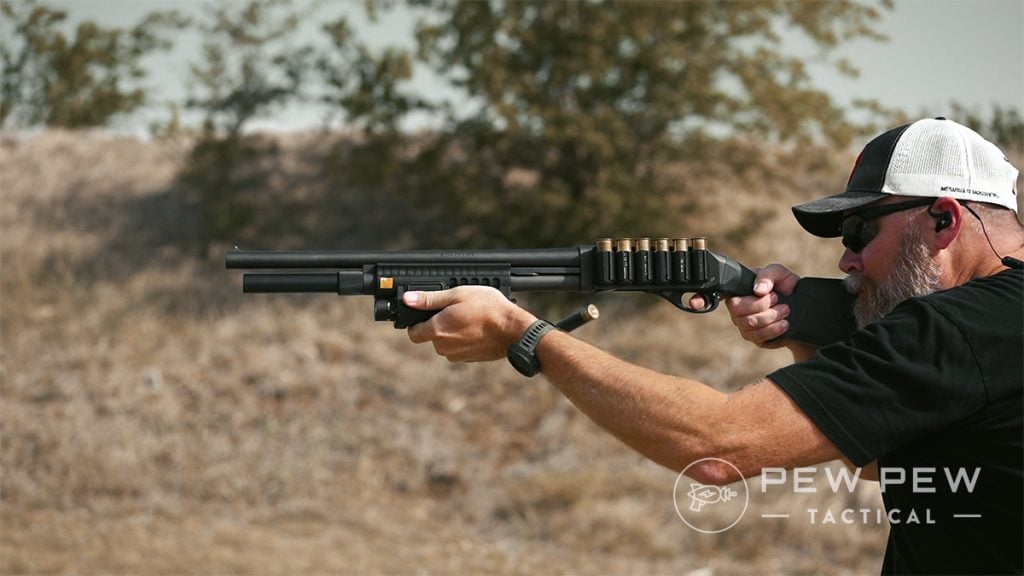
Slug guns are great for extending range but lack the versatility of a standard shotgun. They tend to be used in states or areas where rifles are not allowed for hunting or straight-walled cartridges only.
Caliber Selection
Shotguns come in a variety of different gauges and one caliber. We have a rather diverse selection, but the main ones that matter are 12-gauge, 20-gauge, and .410 Bore. I’d argue 28-gauge has made a slight return to popularity as well but gauges like 10-gauge, 16-gauge, 32-gauge, etc., have faded away.
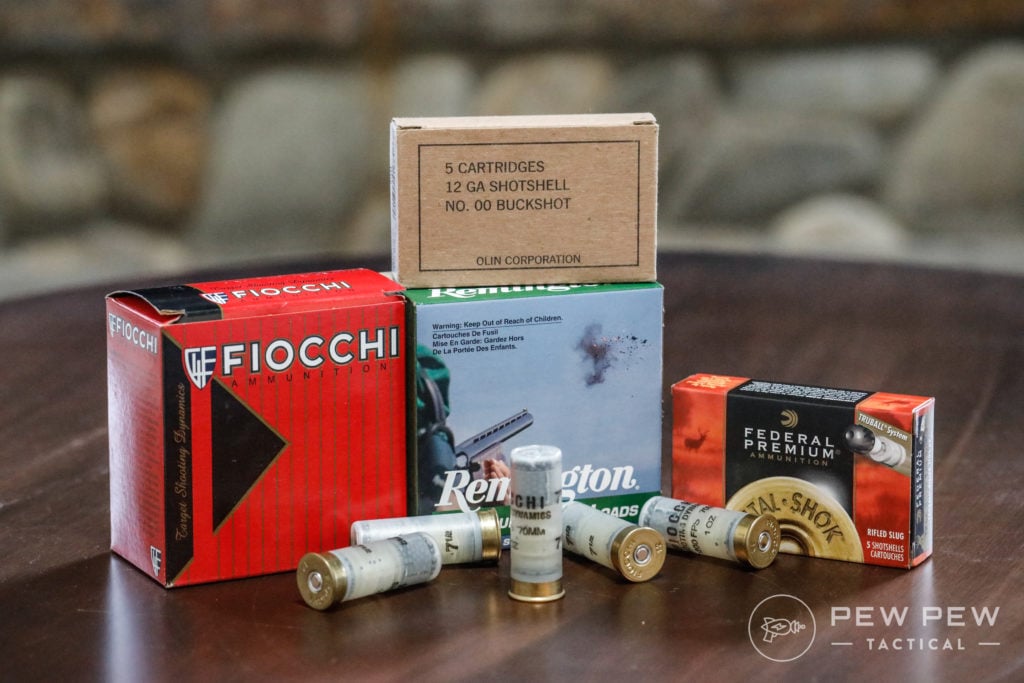
One important thing to remember is the inverse relationships the numbers have. The higher the number, the smaller the shell. We won’t go deep into why, but just remember that.
Let’s discuss each of these and their strengths and weaknesses.
Shotgun Ammo in Stock
12-gauge
12-gauge is by far the most popular load for hunting. It’s used to hunt deer, ducks, rabbits, bears, and anything else you’d use a shotgun to hunt.
It offers a fairly large payload of shots in various shot sizes. 12-gauge shells can be as short as 1.75 inches and as long as 3.5 inches. Each holds a different load of shots. The 12-gauge can hold more shot than the smaller gauges, which typically means denser patterns and longer overall range.
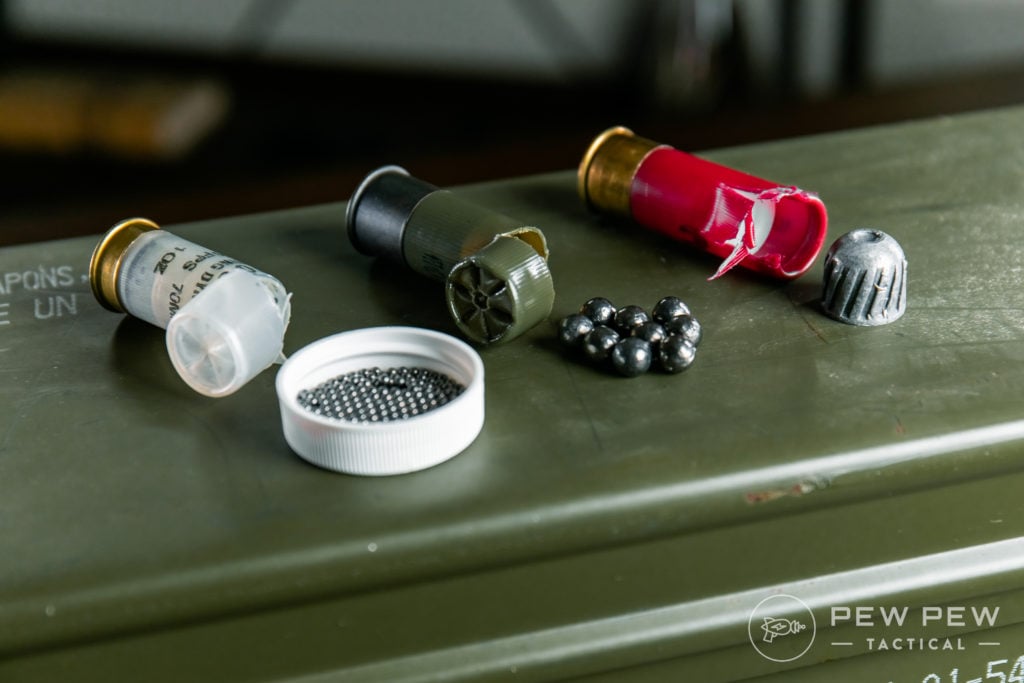
The commonality of 12-gauge makes the ammo easier to find, and you can find the most diverse loadings with 12-gauge.
The downside would be the recoil and weight of the ammo and gun. They are typically aimed at adult users and most aimed at skilled shooters.
20-gauge
20-gauge offers shooters a smaller cartridge that’s still quite capable. The 20-gauge can be used for deer, birds, squirrels, ducks, and more. It can be loaded with buckshot, birdshot, or slugs.
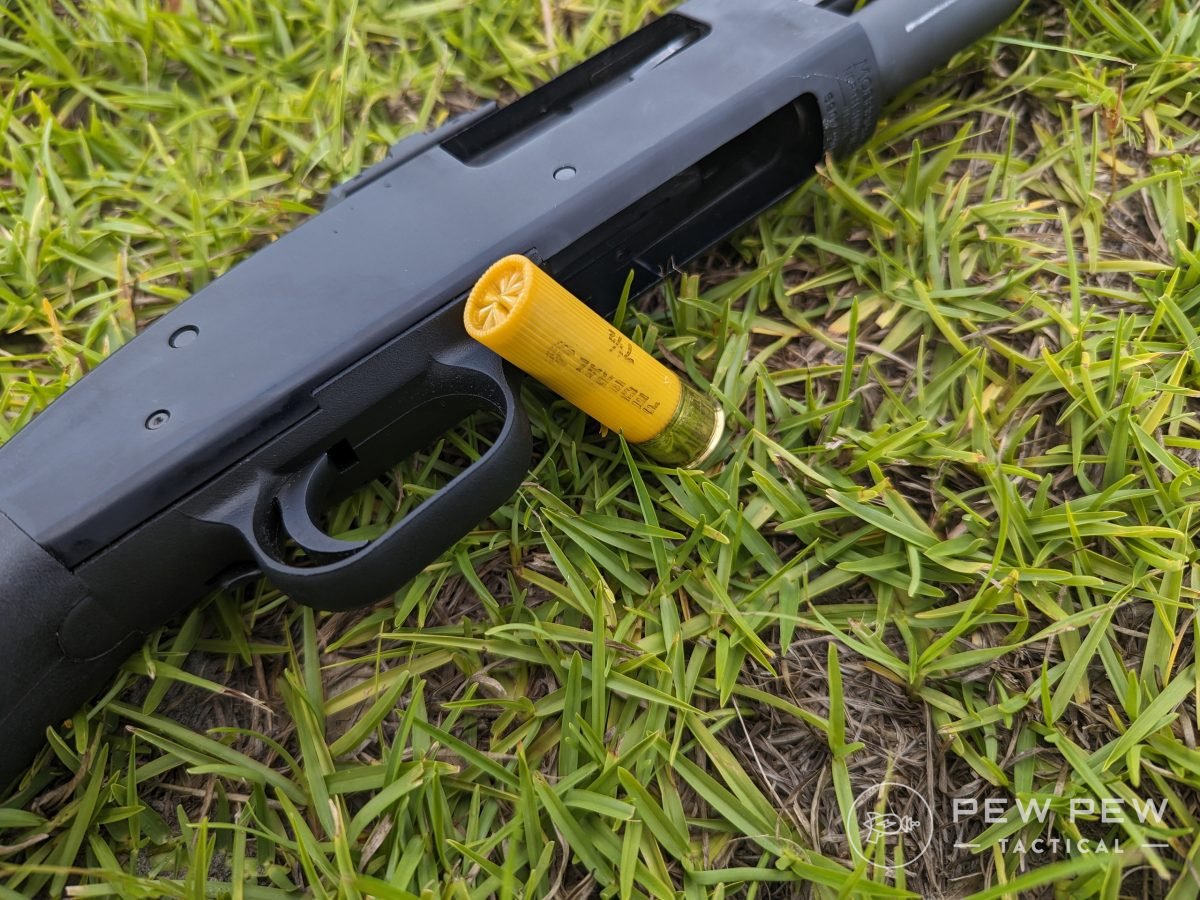
The 20-gauge packs fairly light recoil and doesn’t cause much pain to your shoulder. These guns can also be lighter, smaller, and typically easier to find youth models with shorter lengths of pull. Shell lengths come in 2.75 and 3-inch varieties.
The 20-gauge offers shooters less range and less dense patterns. They also have a smaller variety of loads available.
28-gauge
28-gauge is even smaller than 20-gauge but much less versatile. It’s almost entirely aimed at bird hunting and small game hunting. I’ve never seen factory-produced buckshot or slugs for the 28-gauge.
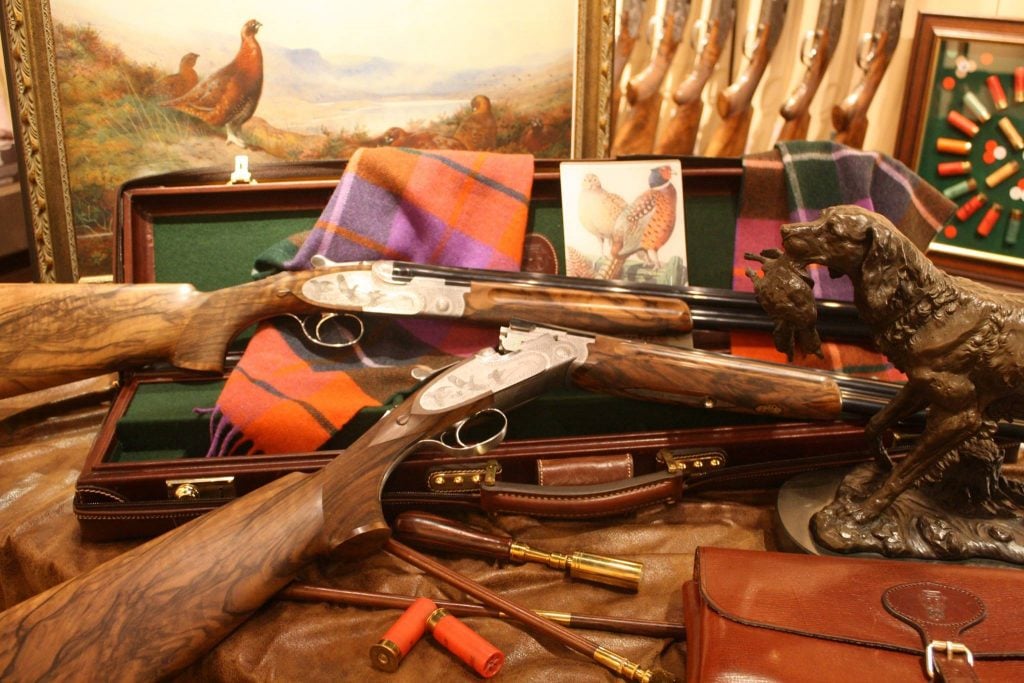
For birds, it does offer youth and new shooter-friendly recoil but has a fairly short range with some not-very-dense shot loads. It’s only appropriate for small birds and wouldn’t be used for geese or the like.
Ammunition has become more common, but there is hardly any versatility.
.410 Bore
.410 is the only shotgun round that uses diameter instead of gauge. It’s the smallest on your list and would translate to 67-gauge if we did the work.
This one is fairly common for youth shooters and skilled upland bird hunters wanting a challenge.
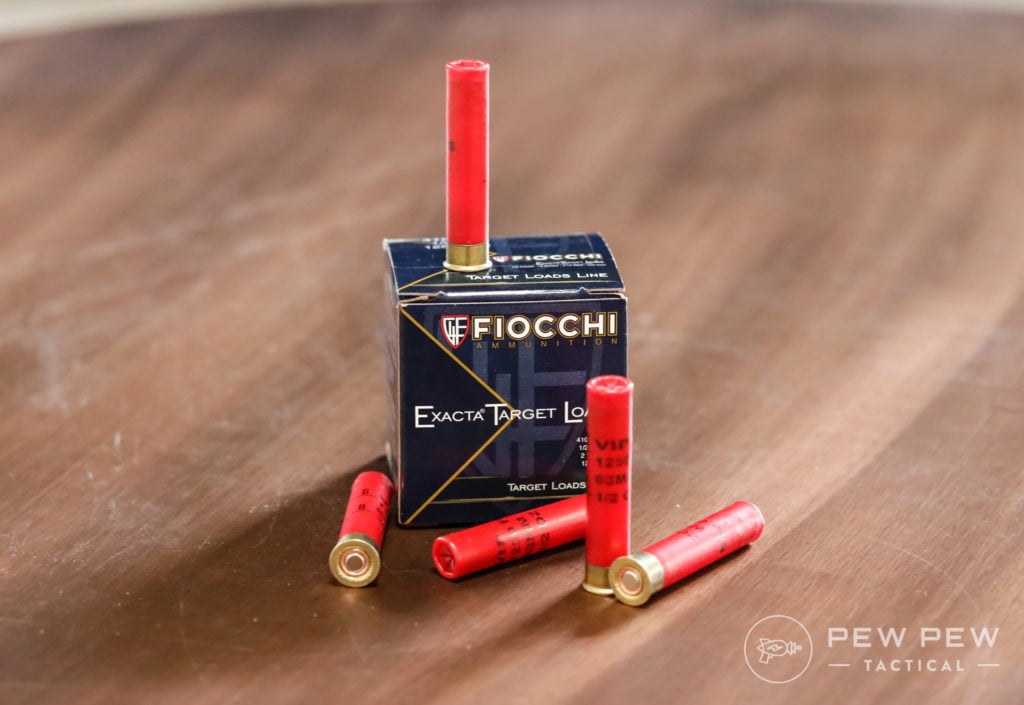
.410 loads come in buckshot, birdshot, and slugs. The buckshot can throw three to four pellets, and the slugs are fairly anemic. They can be used for deer and coyotes, but nothing larger.
Small shells throw a small pattern, and the range and density of the pattern are low. The guns that chamber .410 can be quite light and nice to carry all day in the field.
Load Selection
Once you choose a caliber for hunting, you have to choose a load.
A few factors will determine your load. The biggest will be the game you’re hunting. That will determine if you use buckshot or slugs versus birdshot.
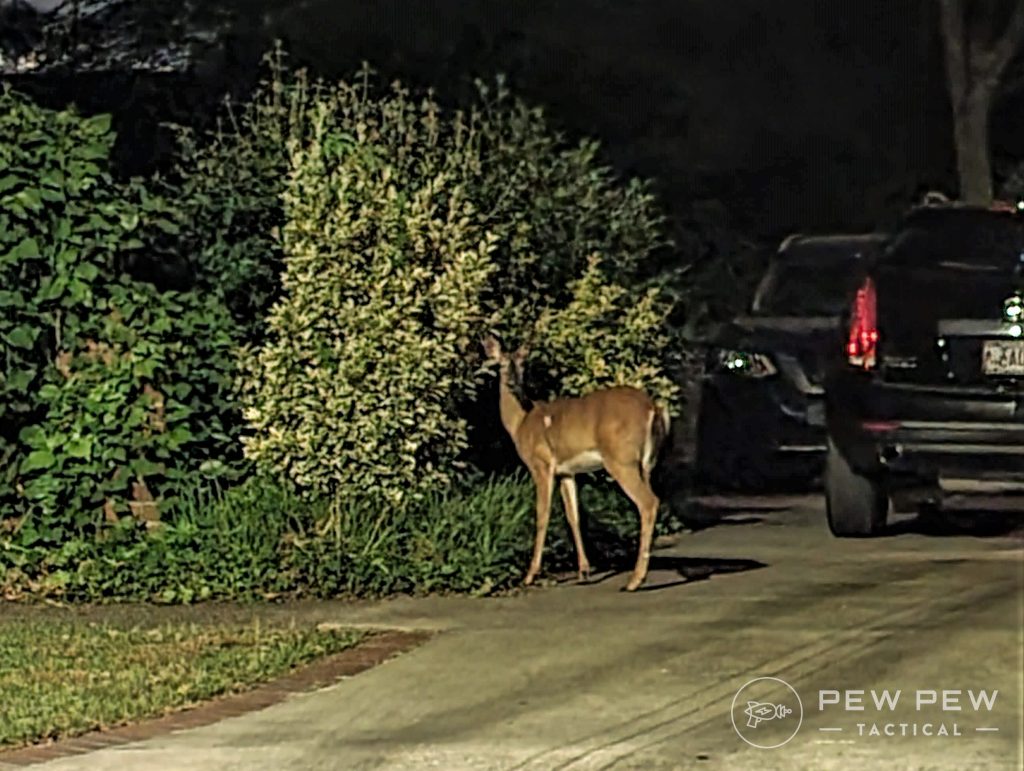
Things get even trickier once we get inside the worlds of birdshot, slugs, and buckshot.
Before we dive into shot size, let’s talk about two considerations you’ll need to make with ammo choices.
Lead Shot
Lead shot is fairly common and often used for a variety of games. However, some states may prohibit lead ammunition as a whole, meaning you have to pick a non-toxic option. Lead shot is federally illegal for hunting waterfowl like ducks and geese.
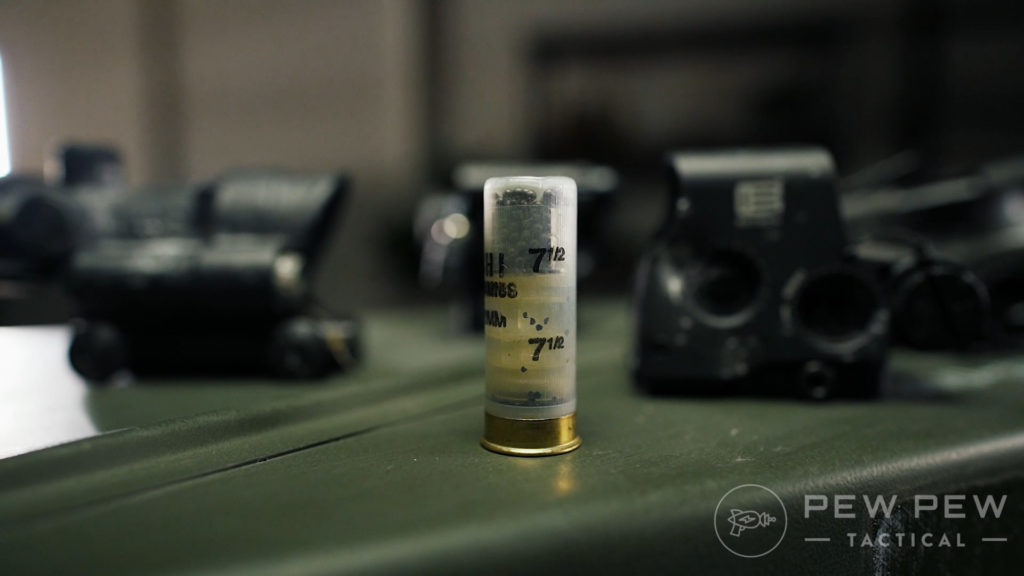
The non-toxic shot includes steel, bismuth, and tungsten. Steel is the most common and most affordable option. It is lighter than lead and often doesn’t work as well as lead. Bismuth and tungsten before are better, but they get quite pricey.
Shotgun Shell Length
The longer the shotgun shell, the more lead it packs, and the more lead you have, the more range for a denser pattern. Shotshells can be as short as 1.75 inches and as long as 3.5 inches.
The most common shell lengths in the hunting world will be 2.75, 3, and 3.5 inches, with anything smaller being regulated to novelty rounds.
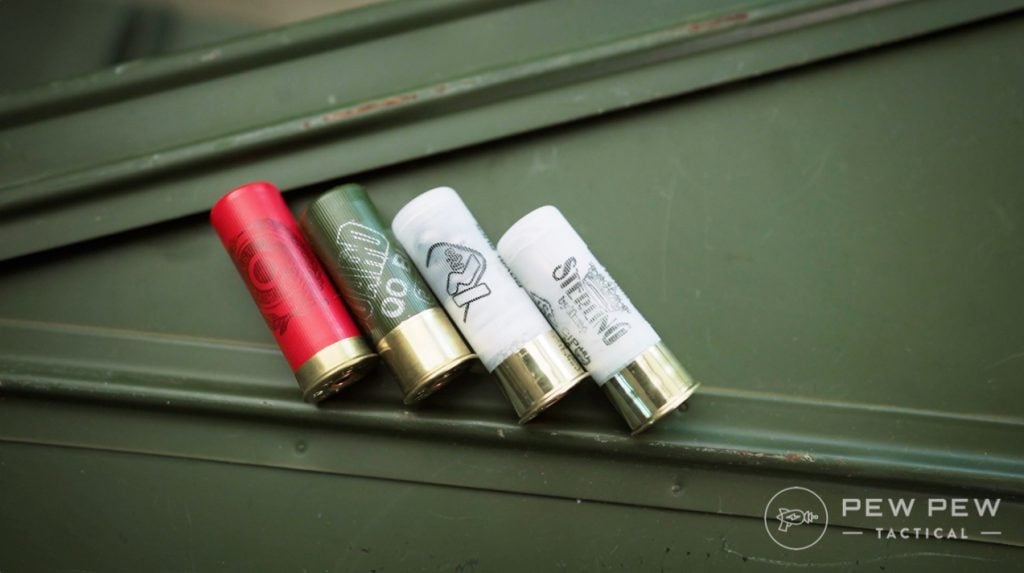
If you are hunting long-range with steel shot, you may choose a 3.5-inch load over a 3-inch load to get better performance overall.
You get heavier doses of recoil alongside these long shells, so keep that in mind.
Also, ensure your shotgun can handle a 3 or 3.5-inch load. If unsure, consult the manufacturer, the manual, or read the barrel.
Birdshot Size
Birdshot is the most diverse group of shot types, and it varies from No. 8 all the way to something called BBB. As the number gets smaller, the shot pellets get larger, and when you get to the B, BB, BBB, and T loads, the pellets are significantly larger.
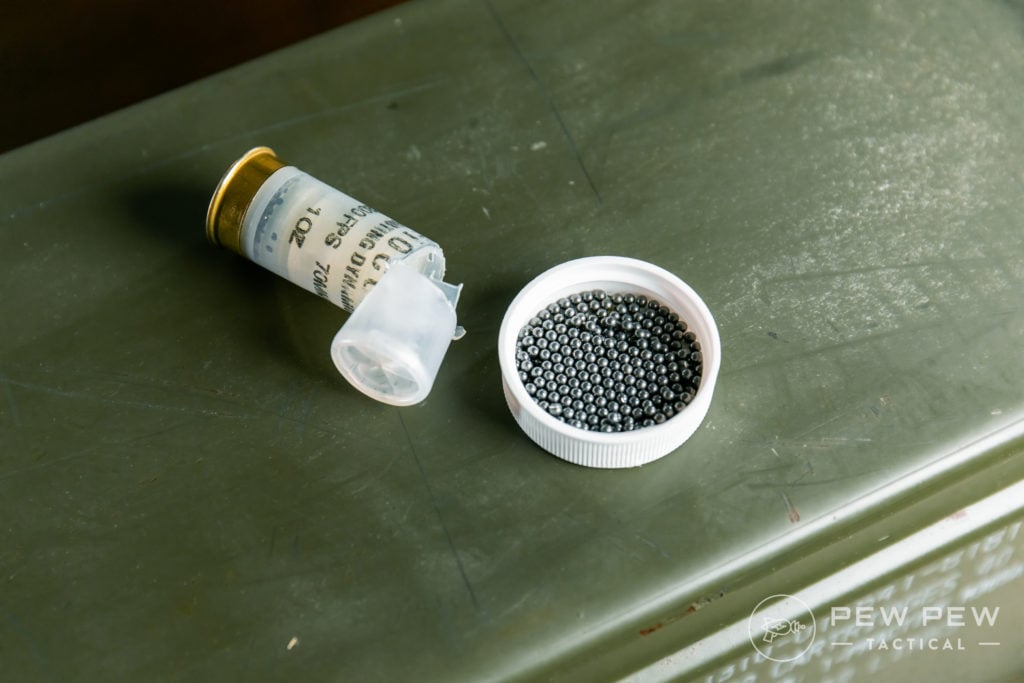
You have to find a good balance of range and pattern density to ensure you can quickly and humanely kill an animal but won’t turn a bird into a poof of feathers.
Here is a short and sweet guide to illustrate the size of the game a load should be used for.
- No. 8: Small birds like doves and quail
- Tungsten No. 7: Turkeys
- No. 7 and 7.5: Partridges and short-range grouse and squirrels
- No. 5 and 6: Rabbits, squirrels, and long-range grouse
- Copperplated No. 4, 5, & 6: Turkeys
- Non-toxic No. 4, 3, & 2: Short-range duck
- Non-toxic – 1, B, & BB: Long-range duck
- Non-toxic BB & BBB: Short-range geese
- Non-toxic BBB, T: Long-range geese
Buckshot
Buckshot has a number of different options for buckshot sizes, but only a few are fairly popular, and there are some varieties depending on the gauge. The 20-gauge, for example, chambers some more unusual buckshot sizes.
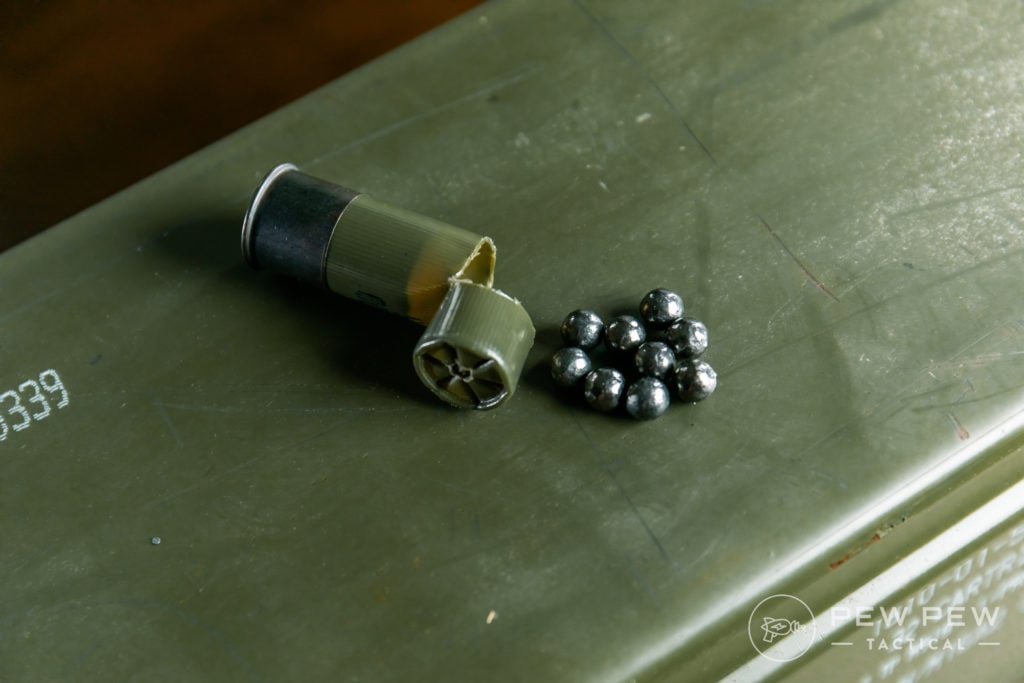
We’ll see numbers similar to the birdshot numbers, but these are different and much larger types of shot. For example, a No. 4 buckshot load has .25 caliber pellets, and a No. 4 birdshot load has .130 pellets.
- No. 4 Buckshot: Coyotes and small predators
- No. 3 Buckshot: Small Predators Whitetail deer common in-20 gauge
- No. 2 Buckshot: Deer common in heavy 20-gauge loads
- No. 1 Buckshot: Close-range deer and large hogs excellent for fixed choke guns
- 0 and 00 Buckshot: Deer and hogs at close to moderate ranges
- 000 Buckshot: Long-range deer or large deer species. It also works well in the tiny .410 shotguns for close-range deer.
Slugs
Slugs are solid hunks of lead that function more like rifle projectiles than normal types of shot. Slugs grant shotgun users a longer effective range and tend to penetrate very deep. Slugs work well for bear and big deer animals.
Slugs are capable projectiles that lose some of the shotgun’s advantages. There are two types of slugs: rifled slugs and sabot slugs.
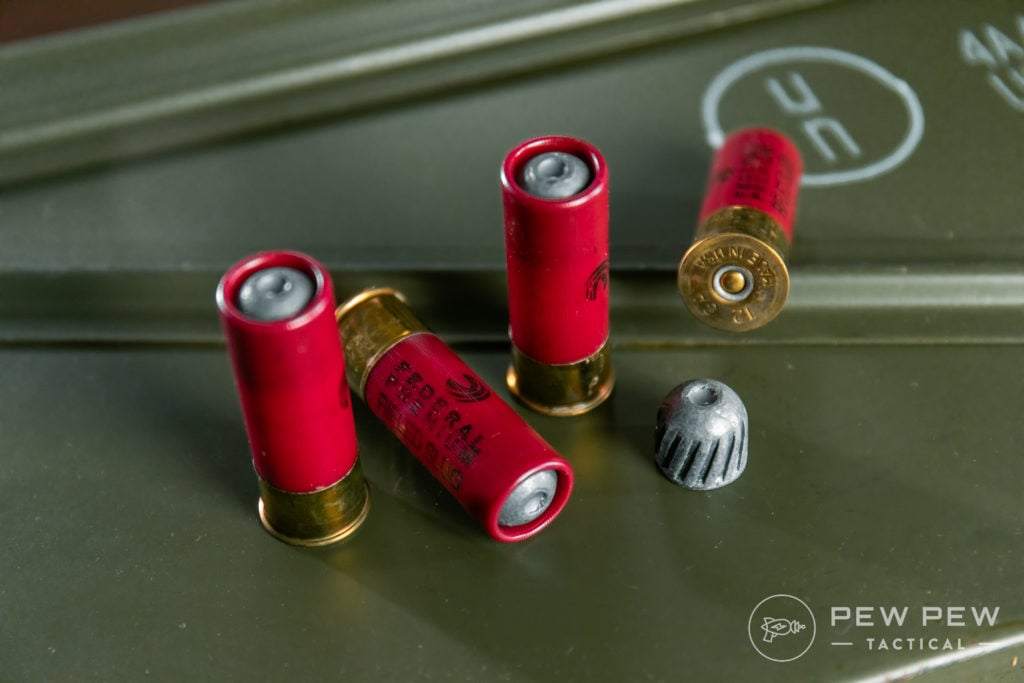
Rifled slugs are designed to be used in smooth-bore shotguns. The slugs have grooves notched into them. These grooves allow it to spin and somewhat replicate a rifled bullet for accuracy and range.
Sabot slugs are encased in a polymer jacket and are designed to be fired from a rifled barrel. Slug guns featuring rifled barrels and sabot slugs allow you to extend your effective range and gain greater velocity and accuracy than rifled slugs.
Choke Selection
Choke tubes are small tubes that thread into the end of the barrel of your shotgun. Chokes apply constriction and aim to reduce and tighten a shotgun’s spread. A shotgun’s tighter spread allows you to keep a denser pattern at longer ranges.
There are several choke types aimed at different uses. Chokes are often a compromise in performance in two ways. Too tight makes it easy to turn a bird into nothing more than a bloody feather. Too loose, and you’ll lose range drastically.
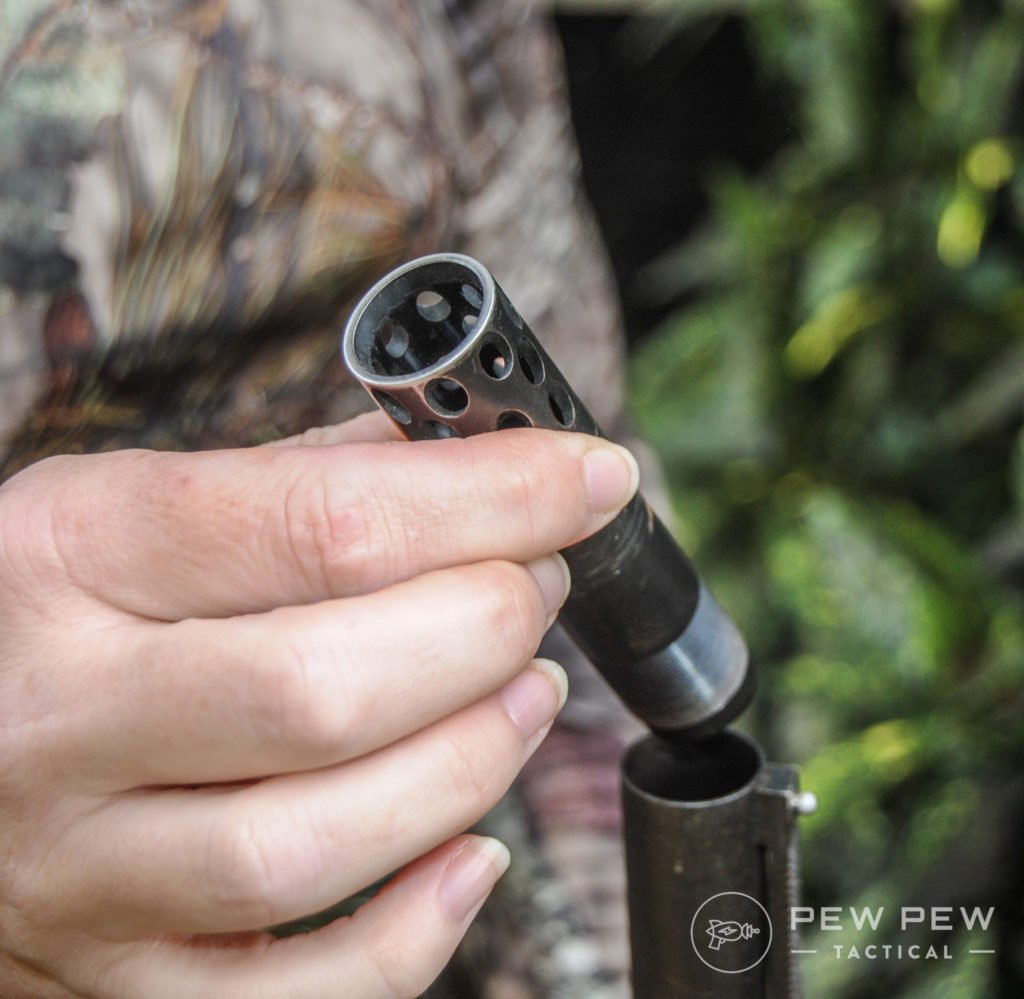
Also, certain loads may not work well with certain chokes. A tighter choke could cause wider patterns. This is why you should also pattern your choke with your shotgun and the load you choose to hunt with.
There are several choke types; here is a short explanation of each.
- Cylinder Bore: No constriction
- Improved Cylinder: .010 inches of constriction
- Modified: .020 inches of constriction
- Improved Modified: .025 inches of constriction
- Full Choke: .035 inches of constriction
These are the most common types of chokes, but other specialized chokes can apply even more constriction. When shopping for a choke, research the amount of constriction and pattern, pattern, pattern.
Barrel Length
Hunting shotgun barrels vary a fair bit depending on their use. With rifles and pistols, the longer the barrel, the more velocity you gain. While that’s also true with shotguns, it’s nowhere near as drastic as a rifle or pistol.
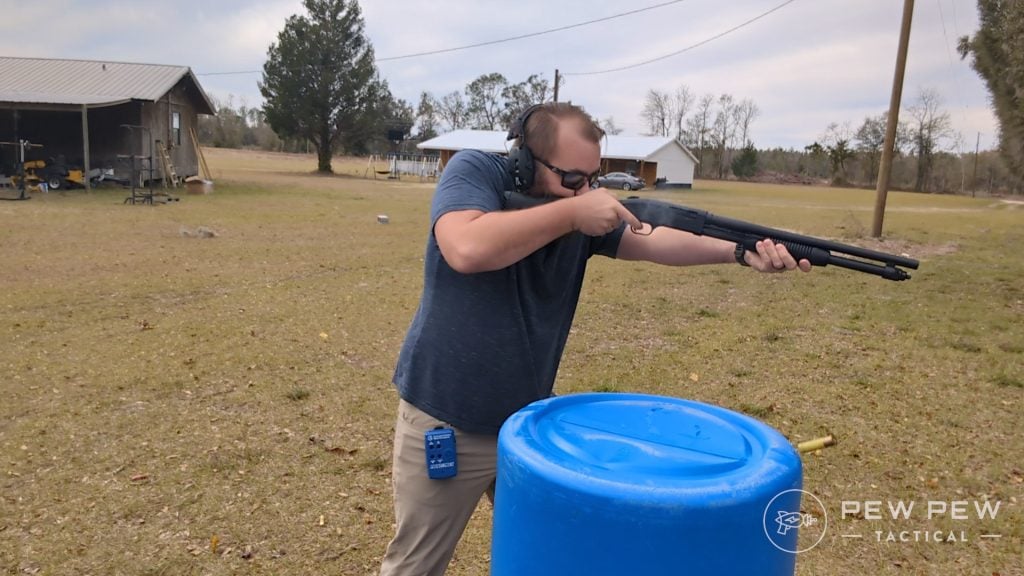
The length of a shotgun barrel typically does two things.
First, it makes the weapon easier to swing, and that’s critical when you are trying to shoot a flying beard. A little extra weight up front makes it easier to keep the barrel swinging. Second, it can provide a longer sight radius for more accurate shooting.
With that in mind, let’s look at barrel length and how it works for hunting different games.
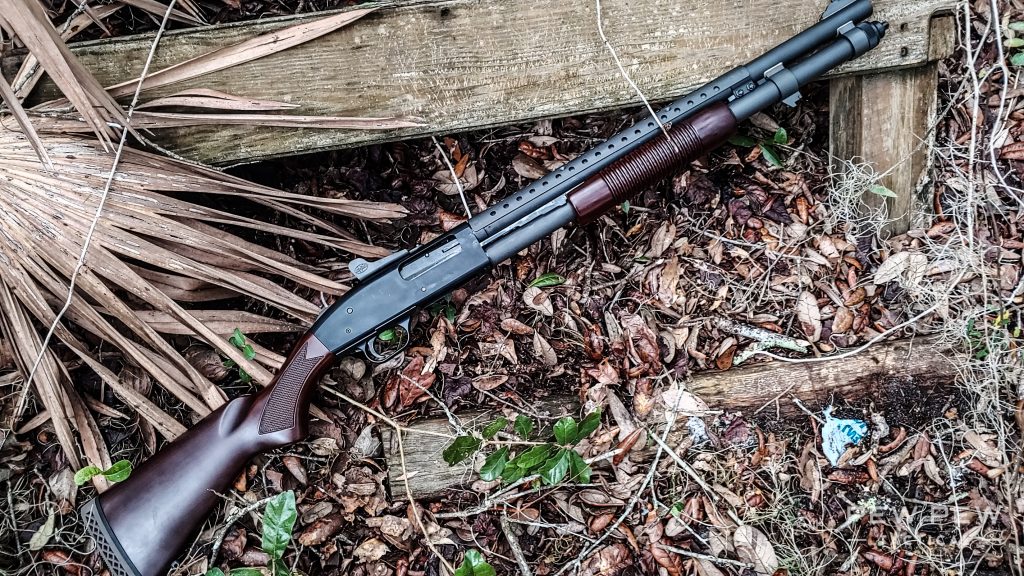
20” – 24” Barrels: These are considered short and are fairly common on guns that use slugs. They are also good for general deer hunting with guns like the Ithaca Deer Slayer, famously being a smooth bore and having a shorter barrel. The shorter barrels are popular when paired with rifle sights. They work well in dense and thick environments. My famed Florida swamps, for example, are basically jungles. A short barrel is valuable here.
26” – 28” Barrels: This is a do-it-all length. Twenty-eight inches is the most common field shotgun barrel length out there. It works well for both big and small birds, deer, hogs, rabbits, and whatever else you may want to hunt.
30” Barrels and up: These are almost solely used by bird hunters, specifically waterfowl hunters looking to take longer-range shots.
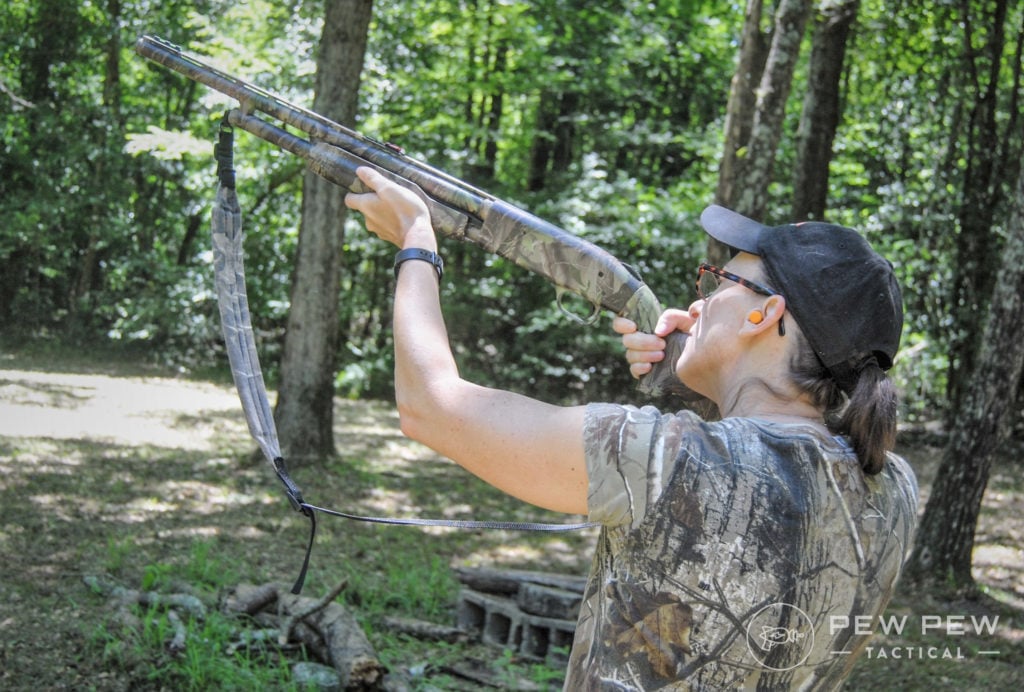
Sighting Systems
Finally, let’s talk about sighting systems. It’s a discussion worth having and understanding the importance and intricacies of.
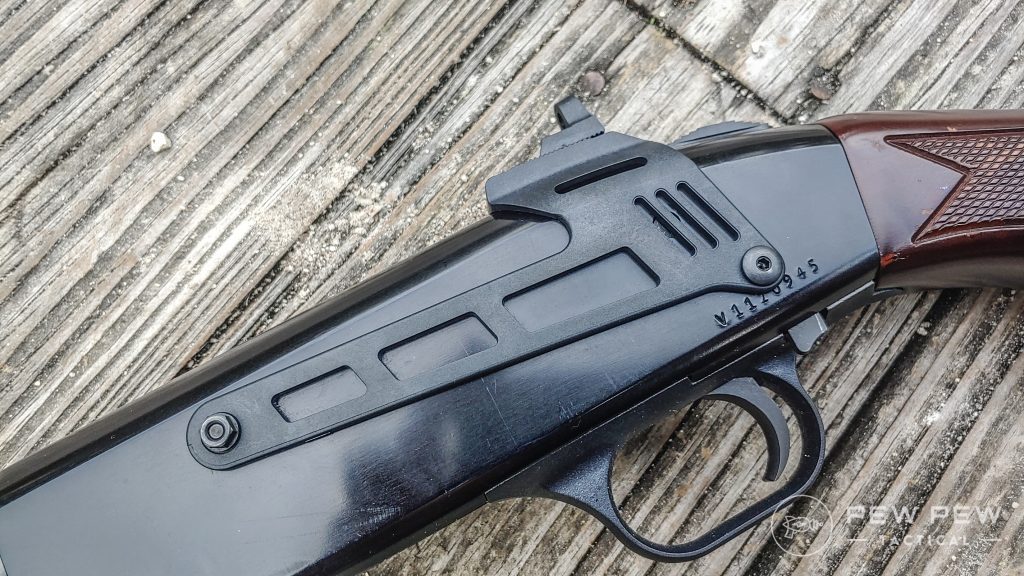
- Bead Sights: The most basic sight a shotgun can have is bead sights. It’s often just a bronze bead at the end of the barrel. It’s simple but usable and very functional. They work well for bird hunting and fine for everything else. They tend to be rather poor for slug work at longer ranges.
- Rifle Sights: Rifle sights have fallen out of favor but tend to be the best iron sight option for buckshot and slugs. They add a degree of precision to make aiming at vitals easy.
- Red Dots: Red dots have taken over the shotgun world and offer you the speed of a bead with the precision of iron sights. Red dots allow you to aim in all lighting conditions and work well for turkey, deer, hogs, and small game.
- Magnified Optics: Lightly magnified optics tend to be preferred by those using sabot slug guns. These allow you to see far enough to make your accurate shots count. They typically range between a 4X fixed power scope and a 2-7X optic.
We have specific recommendations in the Best Shotgun Sights!
Final Thoughts
Shotguns are interesting weapons, and I’ve spent nearly 3,000 words covering the basics of hunting with one. While they are simple in many ways, as you can see, there needs to be thought behind their application. Hopefully, we’ve given you something to chew on regarding hunting with a shotgun.
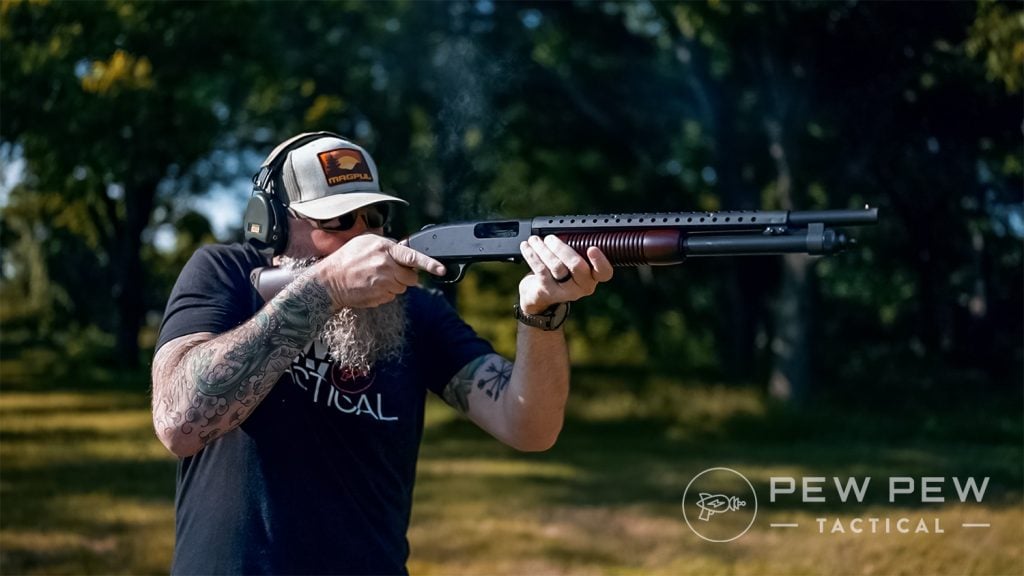
Got any other tips for shotgun hunting? Let us know in the comments below! Ready to add some new gear to your inventory? Check out our recommendations for the Best Hunting Gear for New Shooters. Or, for specific shotgun recs, head to Best Shotguns for Hunting!

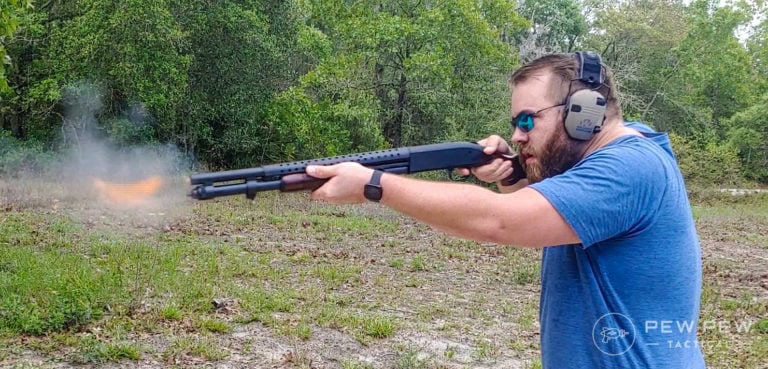







Leave a Reply